German ‘Brown Babies’
Germany’s ‘Brown Babies’
Home Needed for 10000 Brown Babies Interracial Children of War, Ebony Magazine, October 1948
We Are Here! (Wir Sind Hier!)
“We’ve struggled through childhoods filled with confusion, fear, anger, and feelings of inferior self-esteem. Navigated adolescence in extreme conformity to perceived structures of authority in order to redeem our existence or in defiance to them in utter rebellion. Adulthood was either accomplished successfully by integrating the powerful nuances of our diversified selves or postponed until safety could be found in the distanced wisdom of experience. Some of us didn’t make it. Some of us are just now coming of age.” ~ Rebekka White, Black German
Shirley ‘Daniela ‘ Gindler. Born 1952, Nuremberg, Germany. German Jewish Mother/ African American soldier. Adopted at age 2 by African American couple.
Out of the approximately 95,000 U.S. Occupation babies born in Germany shortly after WWII, there were approximately 5000 of us, Post WWII Afro-German children or so-called Negro mulatto babies, better known in the United States as Germany’s “Brown Babies.” In 1952, the SPD (Social Democratic Party of Germany) deemed that we formed a special group, presenting a human and racial problem of a special nature. Our national and cultural heritage were seen to be in direct contrast to our skin color.
Rudy (Hall). Born Germany (Year and City Unknown) Adoption Rescinded.
Article: Germany’s Brown Babies: The Difficult Identities of Post-War Black Children of GIs by Stephanie Siek
Excerpt:
Born in an era when Germany was still grappling with its responsibility for the Holocaust and when the US Army had a policy of not acknowledging paternity claims brought against its soldiers stationed abroad, some of these children were put up for adoption in the United States. At the time, Germany judged itself incapable of absorbing these “brown babies” — as they have come to call themselves. In the late 1940s and 1950s, efforts were made to match them with African-American military families, many of whom were stationed around Germany at the time.
Forbidden to Speak German
The adoptees grew up in the United States, many with no idea they were adopted or that they were half-German (for information on the difficulties encountered by black GIs wanting to stay with their German girlfriends, read the sidebar on the left). Scattered across the country, many of the children were forbidden to speak German in their new homes. At the time, it was believed that continuing to speak German would damage their ability to learn fluent English.
“And the day came when the risk to remain tight in a bud was more painful than the risk it took blossom.” ~Anaïs Nin
German Passport of Shirley Gindler-Price
Shirley (Hall) Gindler-Price Naturalization Day. Becoming a citizen of the USA.
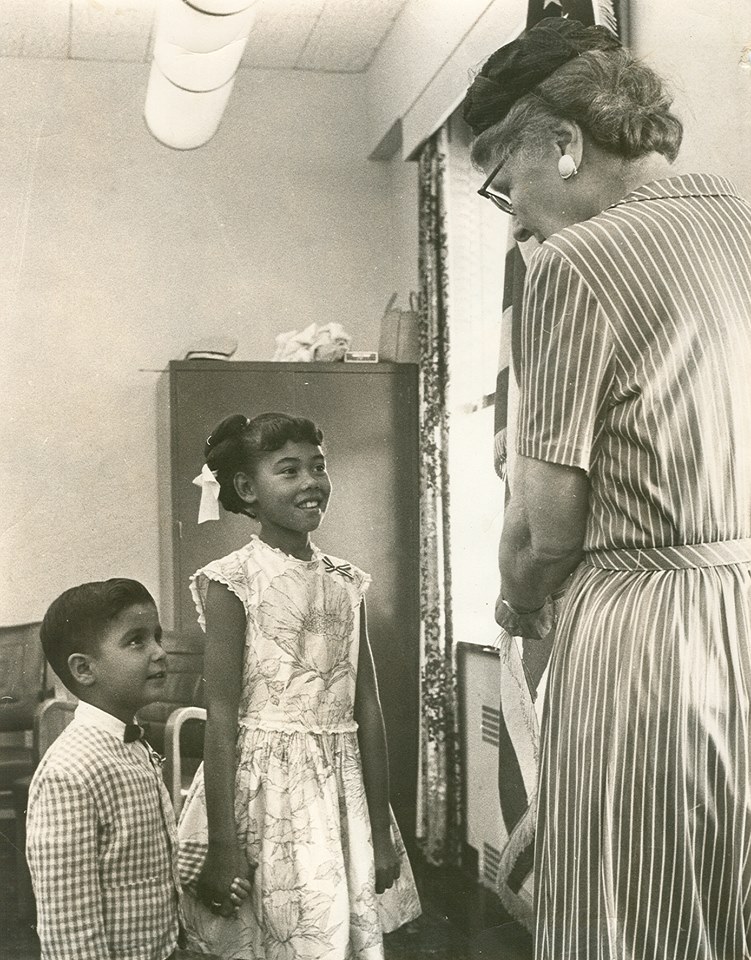
Henriette Hood-Cain. Born 1952, Darmstadt Germany. German mother/ African American soldier. Adopted at age 2 by African American couple.
Jelka Lehman. Born to a German mother and African American Soldier. Adopted by a German Family.
Nancy. Born in 1973 in Berlin, Germany, to a German mother and African American soldier. Adopted by a German family.
Vaughn Filmore. Born 1952, Karlsruhe Germany. German mother/African American soldier. Parent married.
Rudi ‘Udo Ackermann” Richardson. Born in 1955 to a German Jewish mother and African American soldier. Adopted at age 2 by African American couple.
Father of adoptee Shirley Gindler-Price (nee Hall),
SFC. William Hall with child. 1956-57
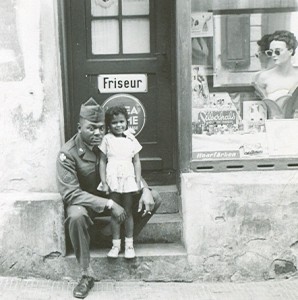
INTERESTED IN SEARCHING FOR
GERMAN RELATIVES?
PLEASE SEE OUR PAGE: SEARCHING AND RESEARCHING FAMILY
Brotherly Love – Jet Magazine, December 18, 1952
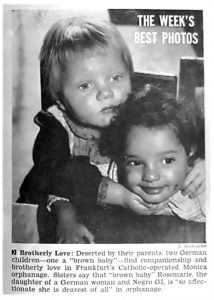
Tan Tots Attend German Schools – Jet Magazine, July 24, 1952
German Brown Baby in a Water Lily – Hue Magazine, January 1955
Brown Babies Become Americanized -Jet Magazine, May 21, 1953
Brown Babies Adopted by German Families – Jet Magazine, November 8, 1951
Brown Babies Find New Homes In America, Jet Magazine, Oct 8, 1953
Two Brown Babies (Interracial Babies of War) Adopted by Edward Cardwell and Wife Hattie – Jet Magazine, January 29, 1953
German Brown Babies (Interracial Children of War) Get Arkansas Home with Dr. DW Young in Arkansas – Jet Magazine, June 4, 1953
Small Talk in Mannheim, Germany – Hue Magazine Mar, 1954
Reporter Jimmie Hicks and Wife Daisy Adopt German Brown Baby (Interracial Child of War) – Jet Magazine, June 18, 1953
BGCS Recommended Documentaries: Brown Babies: The Mischlingskinder Story
- Best Documentary, American Black Film Festival 2011
- Best Film, Audience Award, African-American Women in Cinema 2011
- HBO Finalist, Martha’s Vineyard Black Film Festival, 2011
- Best Documentary Nominee, Black Reel Awards, 2012
Two nations ashamed of their own: Nazi Germany and Jim Crow America. This is the true story of the children born in post-war Germany to black American soldiers and white German women, and the African-American socialite who took it upon herself to rescue hundreds of the children when armies and nations did nothing.
PLEASE NOTE:
*German ‘Brown Babies’ was a term used mainly in the US to identify German-born post WWII mixed-race babies. Black German adoptees living in the US identified as German ‘Brown Babies’ for lack of a better identification. In Germany, post WWII babies were called Mischlingskinder (mixed-race children). Both identifications are considered to be derogatory, but significant in their historical context. Mischlingskinder was employed as a legal classification during the Third Reich to demote German citizens to subjects on the basis of race. The uncontested retention of this term after 1945 was surprising; nonetheless, its meaning had changed.
First, it was stripped of legal significance and returned to its pre-1935 use as social marker. Second, while it was earlier applied primarily to the children of Christian-Jewish unions, after 1945 this usage was dropped, and Mischling was employed exclusively to designate German children of color, usually of African or African American paternity, but also occasionally Puerto Rican and French Indochinese. Thus the term marked the children’s racial and national difference from white German children. Today, many people of color of German descent identify as either Black German and/or Afro-German.
BGCS Notes: Other Post WWII War Babies
Italian War Baby Learns His Three Rs – Hue Magazine, July 28, 1954
Japanese Say GIs Have Fathered 200,000 Babies – Jet Magazine, Feb 28, 1952
Heartbroken Brown Babies (Interracial Babies of War) in Japan – Jet Magazine, December 13, 1951
Piggyback on a Bike – Hue Magazine June 16, 1954
Korea’s Ostracized Brown Babies – Jet Mag, Mar 24, 1955
For information about post WWII Afro-Asian war babies see:
Dream of the Water Children: The Black Pacific
MEMOIRS & STORIES BY ADULT AFRO-GERMAN TRANSRACIAL/ TRANSCULTURAL ADOPTEES
A Brown Baby’s Journey by Frank Walters
A Little Brown Baby: An Afro-German Adoptee’s Story by Shirley Gindler-Price (Shirley Daniela Gindler)
A Question of Color by Daniel Cardwell
Between 2 Races by Tammy Lisa Carmen St Clair
Feeling Counterfeit by Heather Proffer
I’m a Part of History Many Want to Forget by Rudi Richardson (Udo Ackermann)
Invisible Woman: Growing Up Black in Germany by Ika Hugel-Marshall
It’s not always Black and White: Caught Between Two Worlds by Dr. John Reed
Mixed Blessing by Doris McMillon
My Soul Has Found Its Home by Shirley Gindler-Price
Split At The Root: A Memoir of Love and Lost Identity by Catana Tully
The Whorl According to My Gospel by Rudy Richardson
Please note: Photographs of Ebony, Jet, and Hue Magazine front page covers and articles are courtesy of vieilles_annonces.







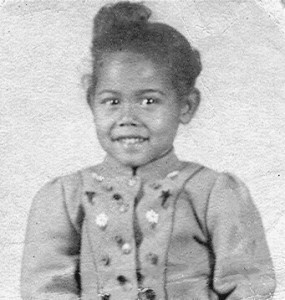
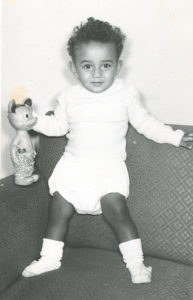






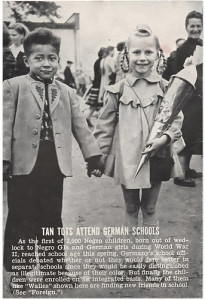



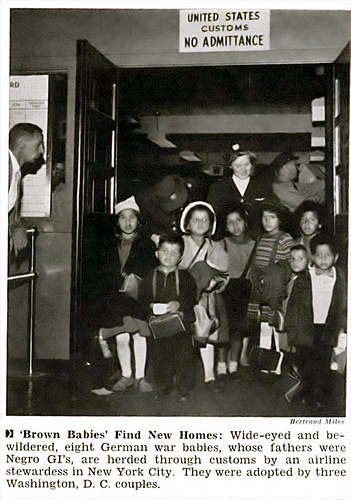

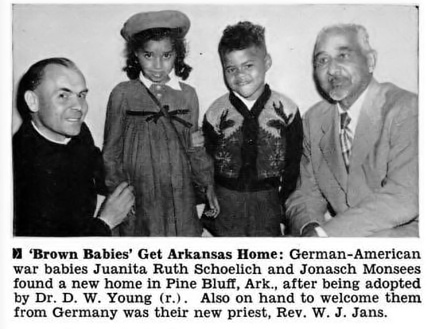
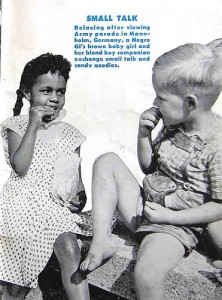
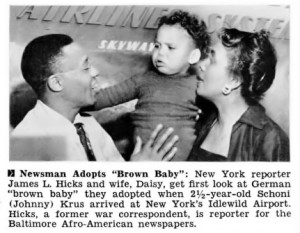
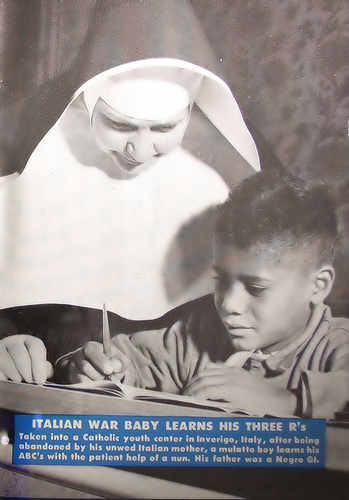
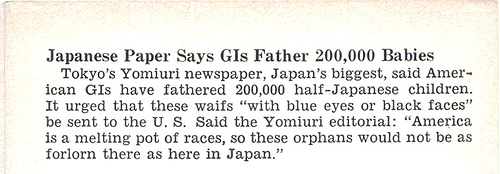
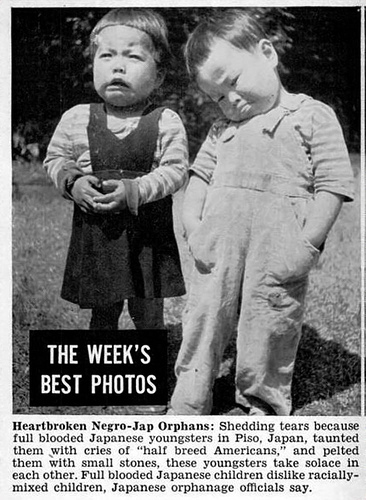
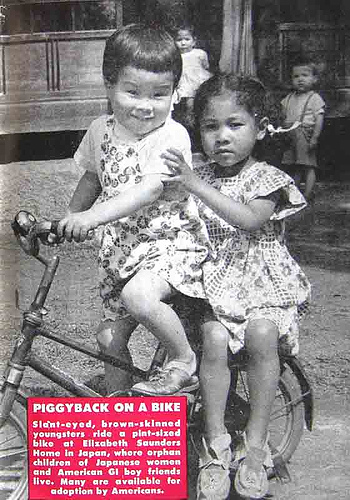
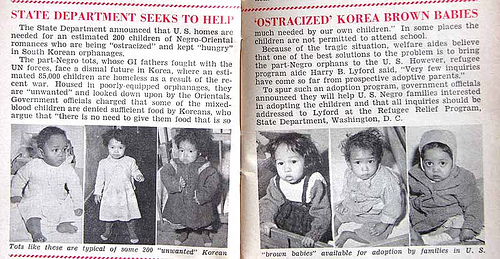
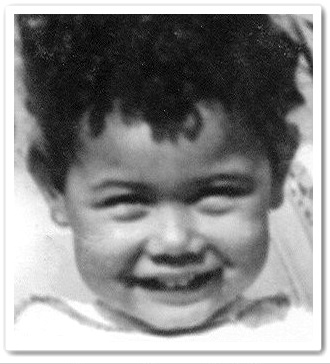
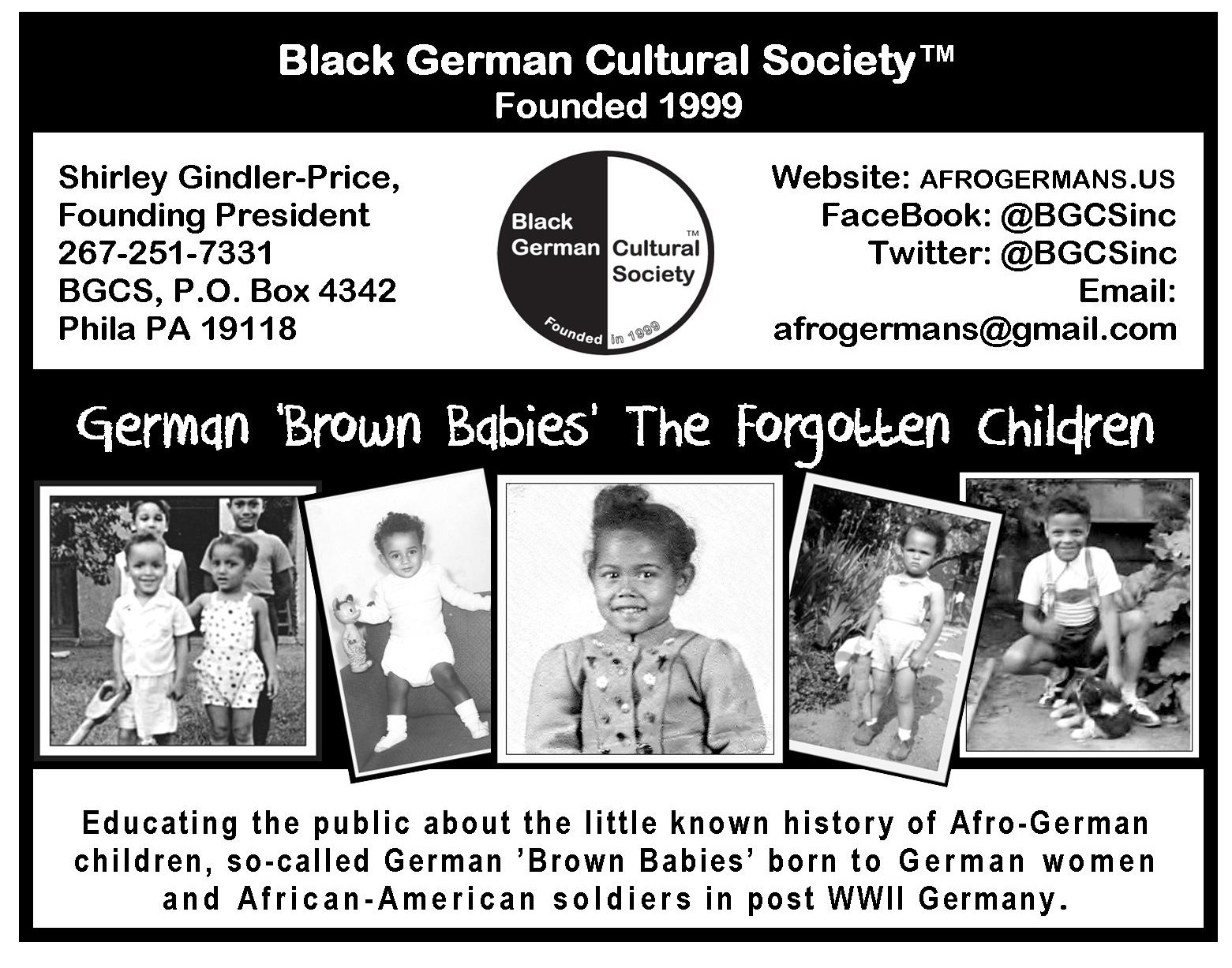


Leave a Reply